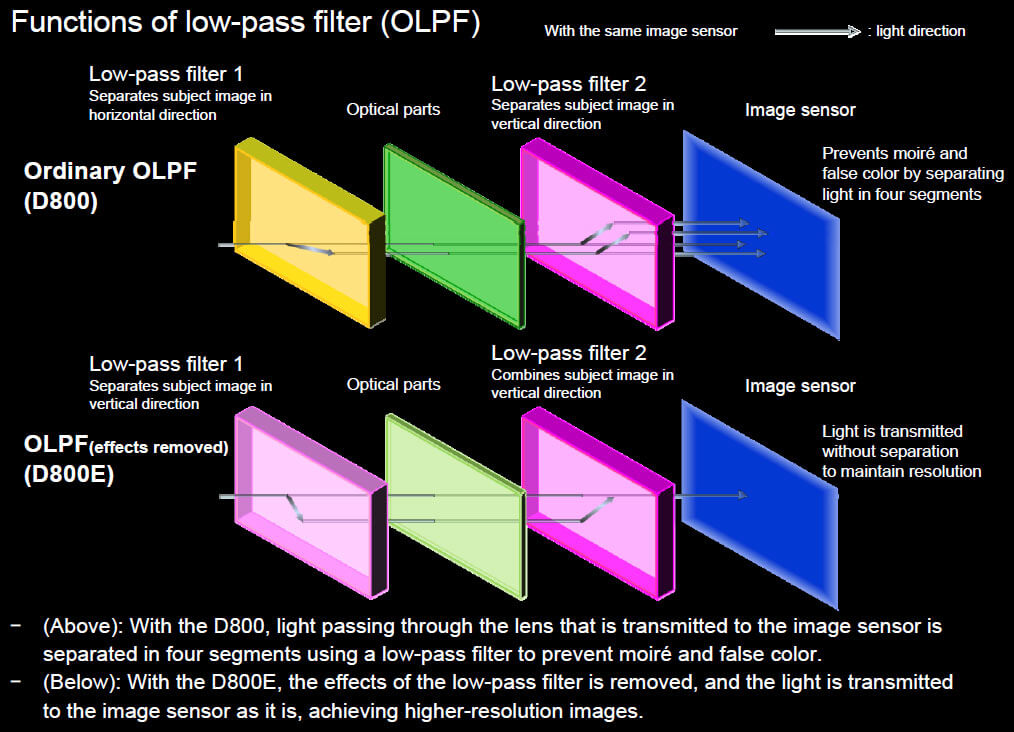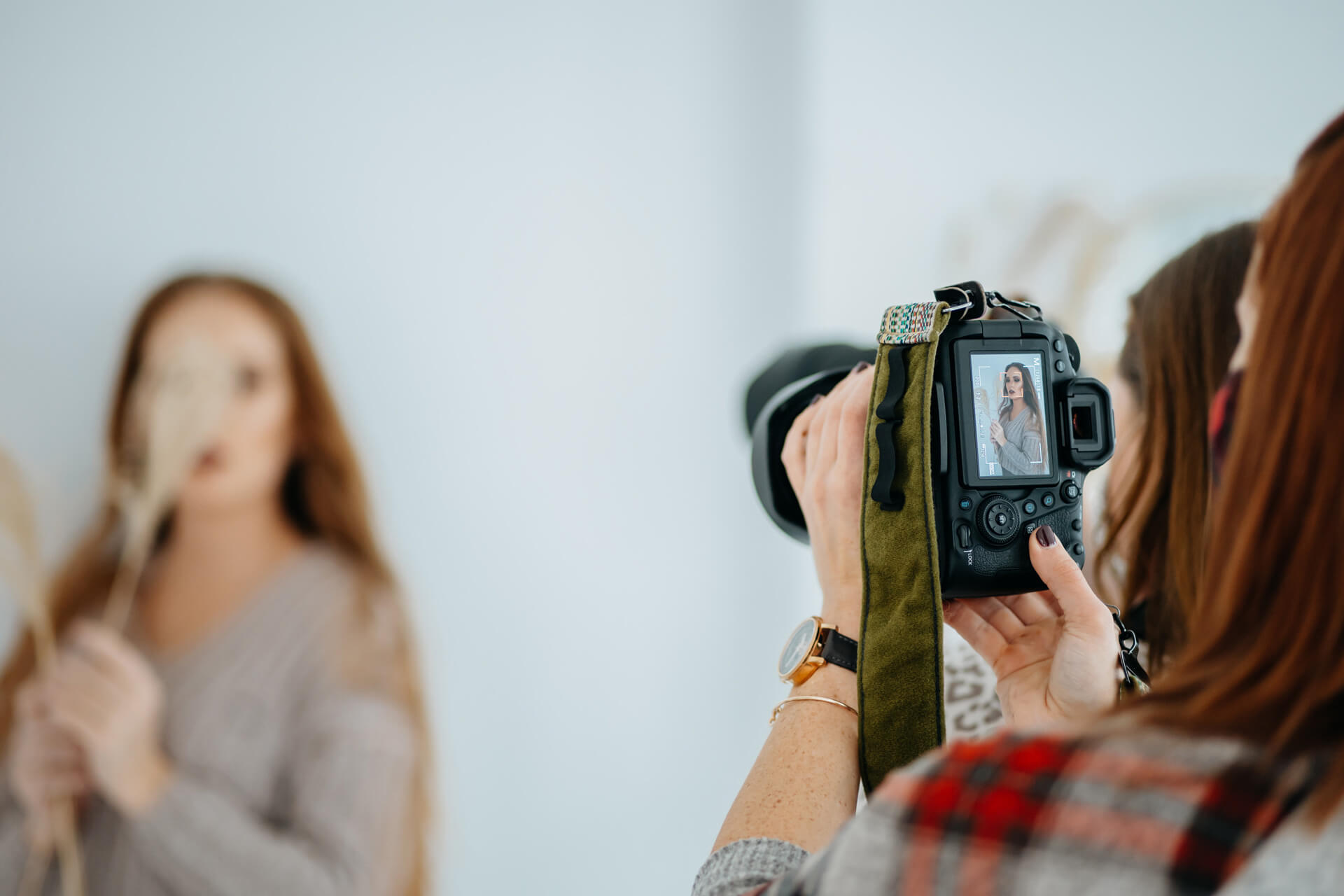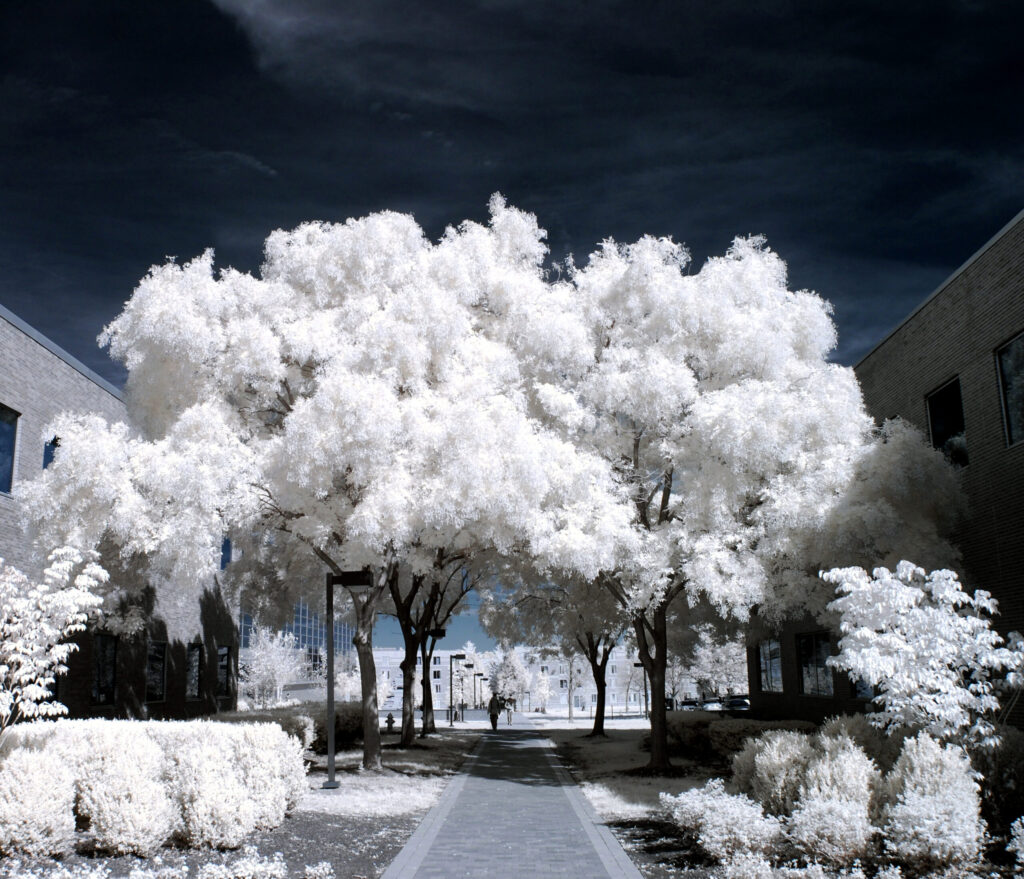Have you ever tried taking a picture of your computer screen with your phone, and it comes out like the picture above? Those weird, discolored waves all over the image are known as moiré. Moiré is caused by high-frequency repetitive patterns. Some camera sensors struggle to record the details of these patterns correctly. As a result, it creates strange bands of color in your images.
Not many photographers are going around photographing computer screens with their cameras, but, more practically, moiré can show up on things like textiles or architecture. The fine lines and details of these subjects can prove to be a big problem for fashion and architecture photographers. Thankfully, most DSLR cameras have an anti-aliasing filter to remove this issue.
What is an anti-aliasing filter? Well, it’s a filter that sits above your camera’s sensor and slightly softens your images, blurring the lines between the high-frequency patterns. This blur of detail in your pictures lowers the frequency to a level your sensor can adequately handle.
Interestingly, many photographers are willing to risk possible aliasing and moiré for more image sharpness. Because of this, many camera manufacturers have removed anti-aliasing filters and increased image resolution on their latest digital cameras, which allows them to capture high-frequency patterns cleanly while reducing the chance of moiré. If you encounter aliasing in your images, post-processing can usually rectify this. Photo editing programs such as Lightroom and Capture One Pro have even added a moiré adjustment slider to make this easy.
If your camera doesn’t have an anti-aliasing filter, you may hear some people say that there is no OLPF. Don’t confuse this with thinking your camera can shoot in infrared. An anti-aliasing or AA filter is often commonly referred to as an optical low pass filter (OLPF), but when talking about infrared photography, it is important to note that these two filters are not exactly synonymous. A camera’s OLPF is a sandwich containing many different layers.
A primary component of the OLPF is the UV/IR cut hot mirror, which allows a stock camera to pass only visible light. The AA filter may be a separate layer in the OLPF stack or a coating applied to another layer. Unless your camera has been converted for infrared photography, it still has a UV/IR cut hot mirror. If you’re interested in trying out IR photography but aren’t ready to convert your camera yet, a stock camera can shoot in 720nm and 850nm when using the appropriate filters in addition to a tripod and a very long exposure.
For more photography articles, check out our Education section, and be sure to sign up for our newsletter to stay up to date on new releases.









